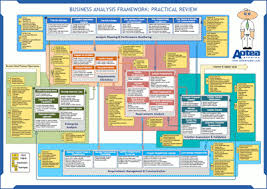
Business Analysis Body of Knowledge and CMS based website and E=commerce digital experinece portal design and development
The Business Analysis Body of Knowledge (BABOK® Guide) is a globally recognized standard for the practice of business analysis. Developed by the International Institute of Business Analysis (IIBA), it provides a structured approach to tasks, techniques, and competencies essential for effective business analysis12. Whether you’re a seasoned business analyst or just starting out, the BABOK® Guide serves as a valuable resource, offering a roadmap to excel in your role1. Companies can use it to plan, manage, and improve business analysis activities, creating a shared language across the organization4. It is an effective method for solution.
The Business Analysis Body of Knowledge (BABOK® Guide) serves as the global standard for business analysis practice. It provides guidance for professionals who perform business analysis tasks, offering insights within six core knowledge areas. These areas describe the skills, deliverables, and techniques necessary for better business outcomes1. In essence, the BABOK® Guide helps business analysts navigate their work, ensuring alignment with requirements and effective decision-making. Whether assessing proposed solutions, defining options, or managing stakeholder relationships, the BABOK® Guide is a valuable resource for Ecommerce solution design and beyond.
The Business Analysis Body of Knowledge (BABOK® Guide) provides valuable insights for designing Content Management System (CMS)-based websites. Here’s how you can leverage it:
-
Requirements Elicitation:
-
Understand stakeholder needs and gather requirements for the CMS website1.
-
Identify content management features, user roles, and workflows.
-
Document functional and non-functional requirements.
-
-
Scope Definition:
-
Specify what the CMS will manage (e.g., web pages, media, user accounts).
-
Clarify integration points with other systems.
-
Solution Assessment and Validation:
-
Validate that the chosen CMS aligns with business goals.
-
Assess scalability, security, and extensibility.
-
Stakeholder Engagement:
-
Collaborate with stakeholders (content creators, developers, administrators) throughout the CMS design process1.
-
Understand their pain points and preferences.
-
Involve them in usability testing and feedback loops.
-
Remember, the BABOK® Guide provides a structured approach to ensure effective CMS design, from requirements gathering to solution evaluation
Most of the BABOK [1,2] activities of the business analysis calls for research and takes a lot of time and effort to gather information and check validity of the information. The new LLM [4]models like Bing coplitot and chat GPT can simplify the process very quickly. For instance you can examine the status quo situation of an industry segment like auto insurance dealer and webportal of such business quickly from Bing Copilot.
The alternative solutions and strategy and customer requirement can also be effectively research and analyzed using LLM generative AI models. The resulting time and cost benefits are enormous.
References
1.0 iiba.org
2.0 BABOK V3- Text ook
3.0 Liferay CMS Portal
4.0 Quick Start Guide to Large Language Models- ISBN